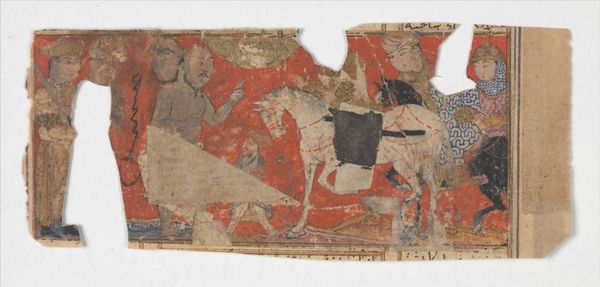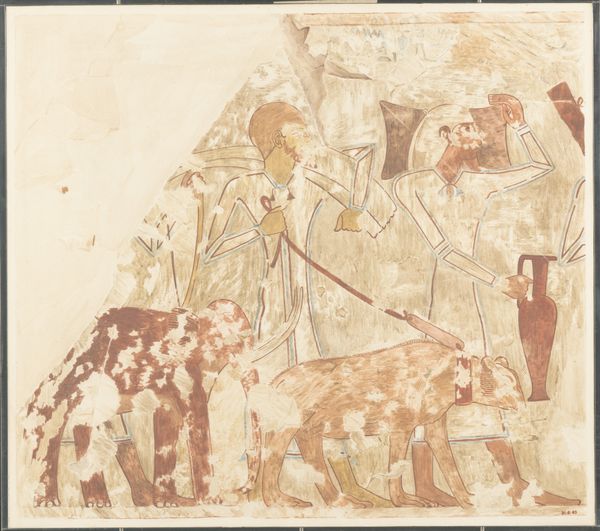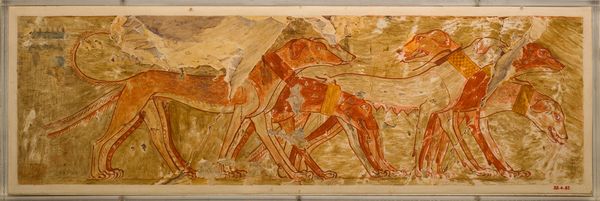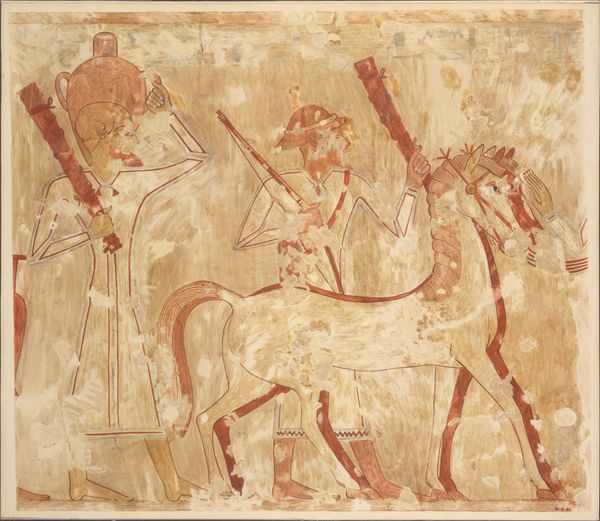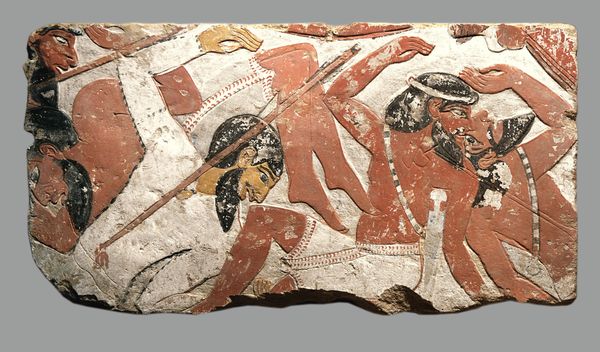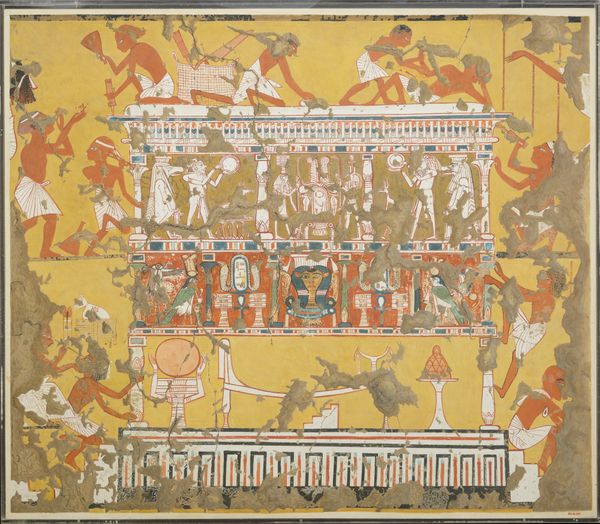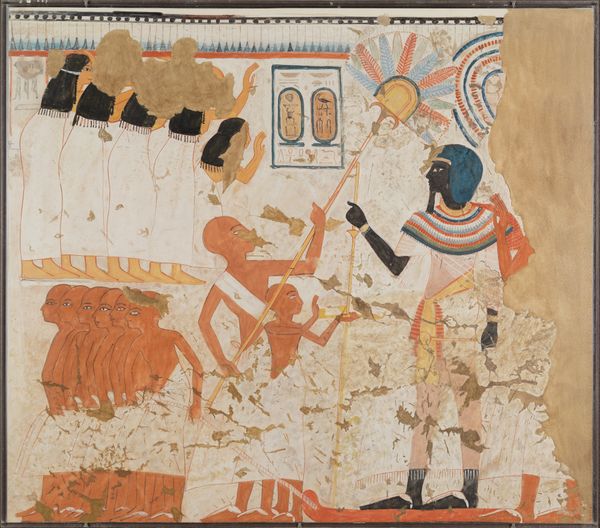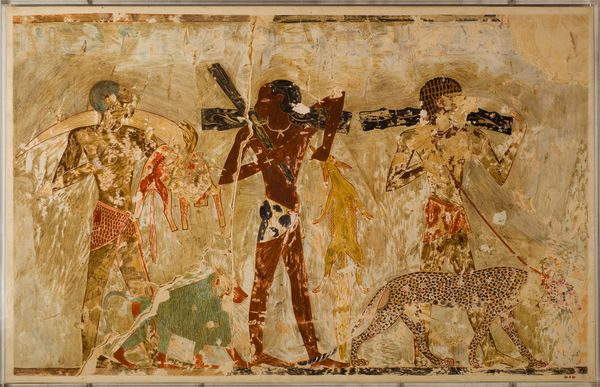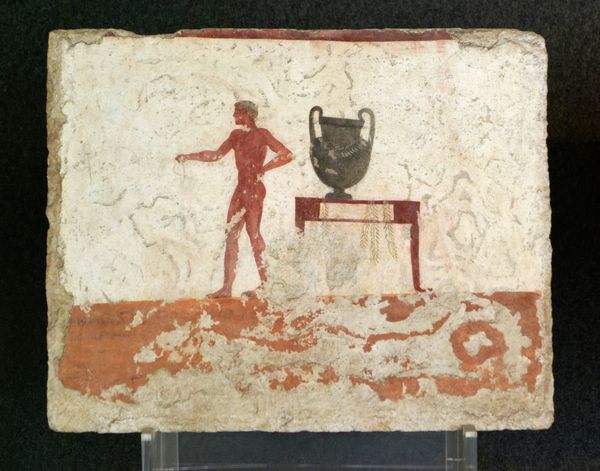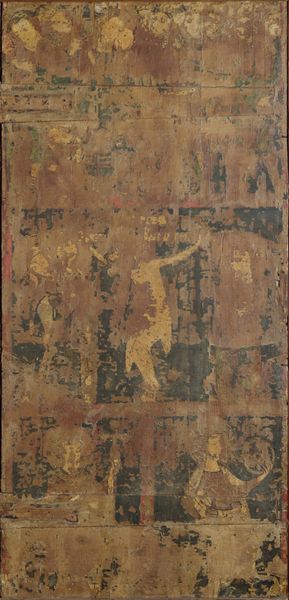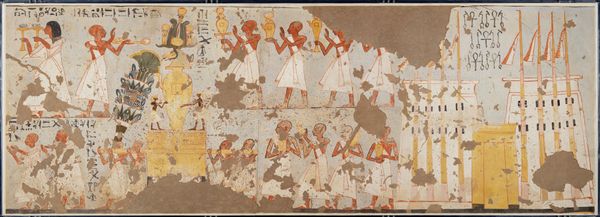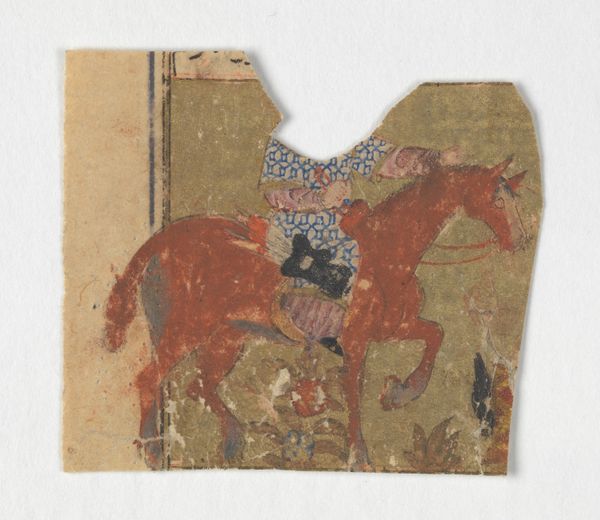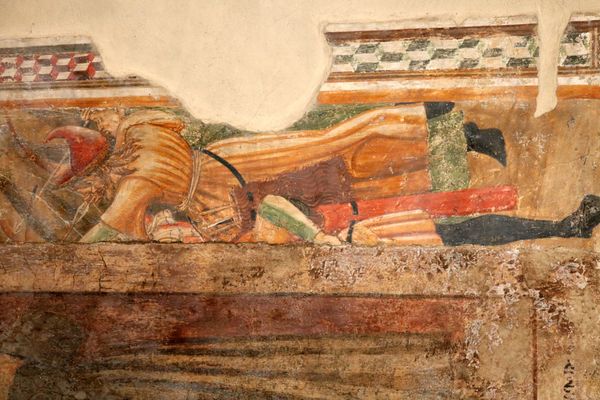
painting, fresco
#
painting
#
landscape
#
ancient-egyptian-art
#
figuration
#
fresco
#
ancient-mediterranean
Copyright: Public domain
Curator: The fresco before us, titled "Bench Side Panel Depicting a Calf in the Marshes," dates back to 1353 BC in Ancient Egypt. What strikes you about this fragment? Editor: The colors! Even in its deteriorated state, the ochre, blue, and faded reds are still so evocative. I wonder about the materials and methods used to produce these pigments almost 3500 years ago. Curator: Well, as a fresco, it would have involved applying pigments to wet plaster. It's remarkable that we can still appreciate these ancient choices of pigment today, but for me, I am most struck by the use of the calf motif and other symbols. How might these visual choices serve a larger meaning for those living in this era? Editor: That depiction of the calf definitely evokes associations with growth, abundance, and even divine provision. Animals were profoundly important symbols of power and the life cycle. Do we know what the function of the bench was that this panel adorned? It likely existed within a palatial or administrative context, and the location may dictate some aspects of the imagery on display. Curator: We believe this likely would have been a high official's residence. To have imagery celebrating natural abundance is significant. Editor: I am drawn back to the technique – look closely; the painting isn't just on the surface. The way the colors seem almost fused into the plaster indicates intentional craft and skill in both sourcing quality pigments, and in their considered and rapid application. This work wasn’t just applied for aesthetic appeal but involved expertise, specialized labor and careful organization. Curator: That’s fascinating! For me, those marsh plants feel key – maybe they were emblems of life emerging from chaos? Perhaps their cyclical nature symbolized perpetual rebirth, deeply tied to beliefs about the afterlife? Editor: So much cultural memory is locked within the image itself! Looking again at how fragmentary it is – these ruined edges and fractured surfaces show that not only natural processes contribute to an object's evolution. Human interventions have inevitably affected what's displayed today. This adds extra historical depth, I feel. Curator: I concur. I have spent more time considering materiality and historical context as a result of this experience today. Editor: And I, how symbols of nature continue resonating with different social contexts over time.
Comments
No comments
Be the first to comment and join the conversation on the ultimate creative platform.
